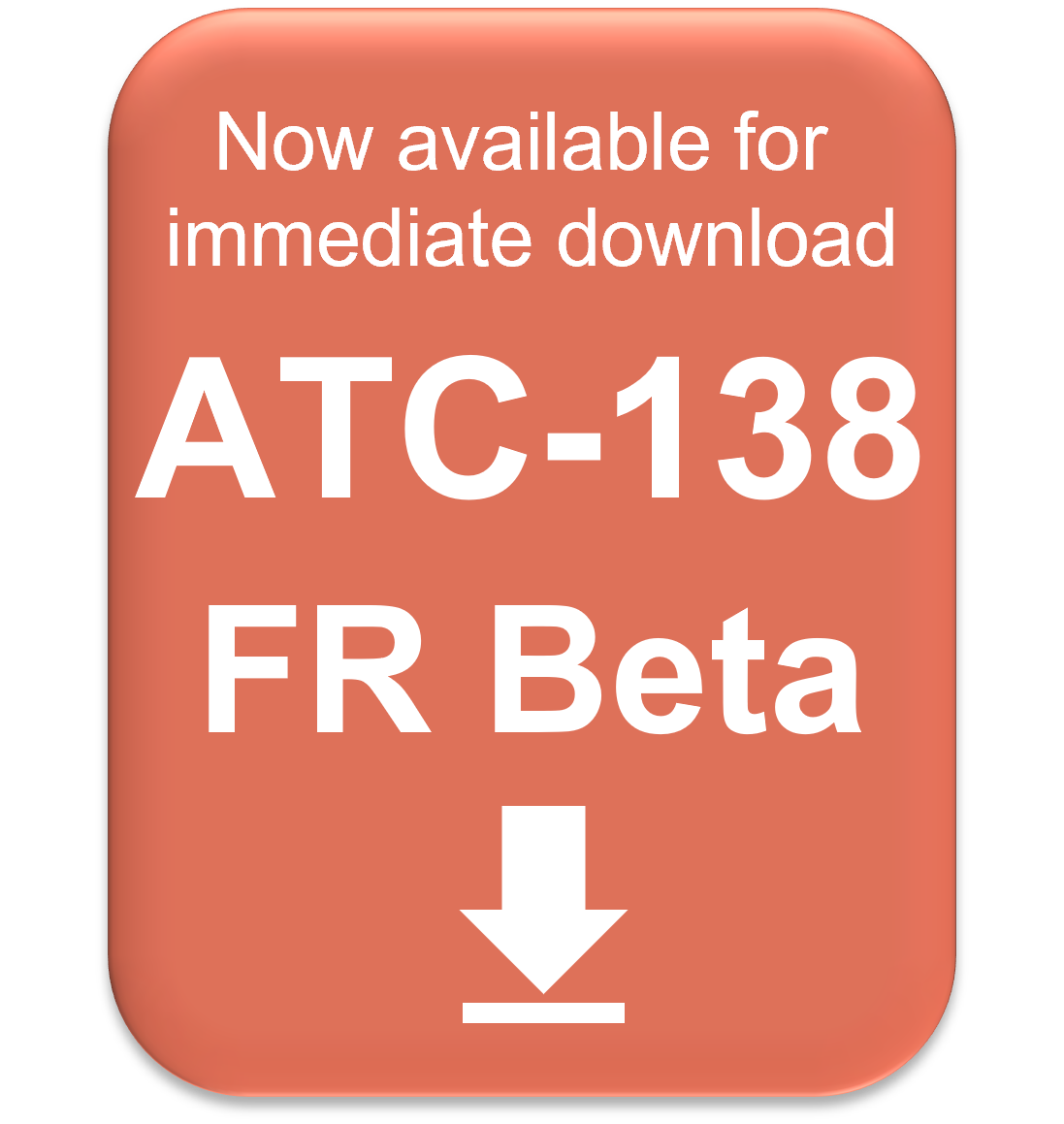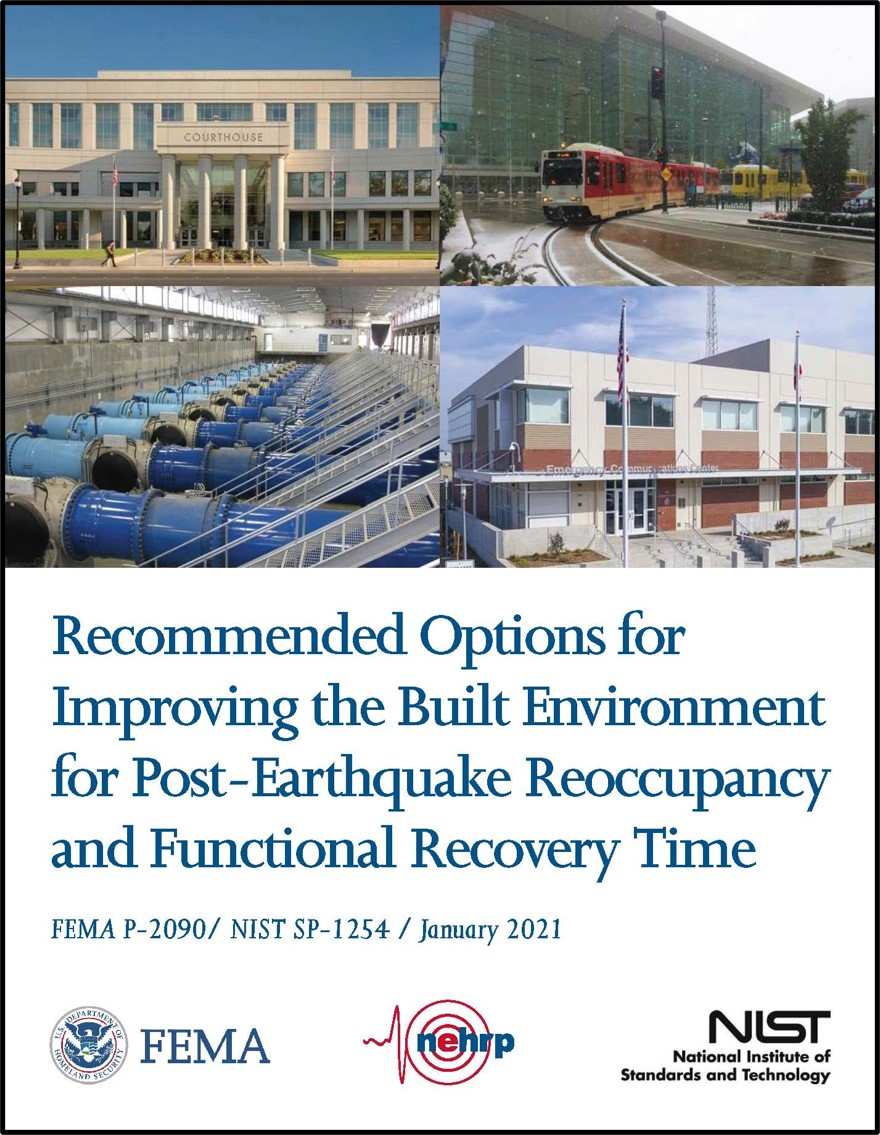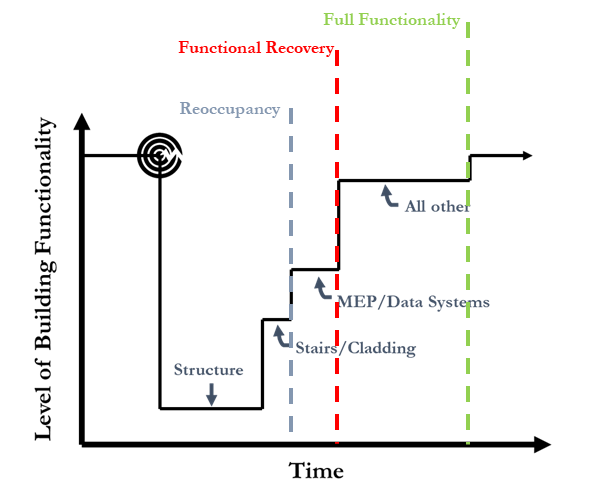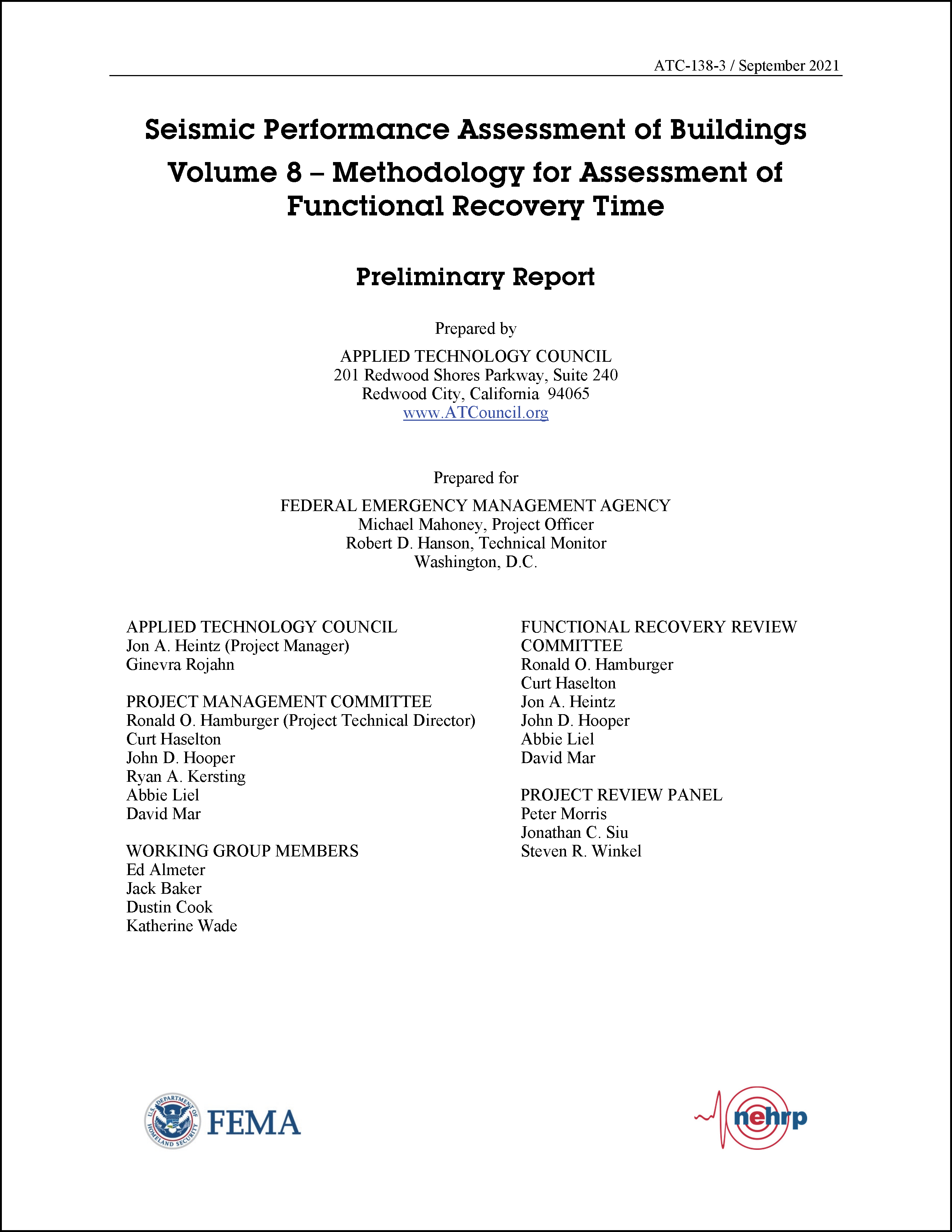FEMA P-58 Enhancement – Functional Recovery Methodology
ATC-138 Project Overview
Following the completion of the FEMA P-58 Methodology, the Federal Emergency Management Agency (FEMA) funded the ATC-138 series of projects to support, enhance, encourage, and facilitate the use of FEMA’s performance based seismic design products and tools. This work includes FEMA P-58 user support, update and enhancement of the FEMA P-58 Methodology, update and delivery of training curricula, outreach to building code and standards committees, and development of additional stakeholder guidance and outreach materials.
National Context
 Federal, state, and local government interest in resilience is growing. If resilience of our communities is the overarching goal, performance-based design of buildings and lifeline infrastructure systems for objectives like reoccupancy and functional recovery are the way that engineers will make it happen.
Federal, state, and local government interest in resilience is growing. If resilience of our communities is the overarching goal, performance-based design of buildings and lifeline infrastructure systems for objectives like reoccupancy and functional recovery are the way that engineers will make it happen.
In 2018, as part of the most recent reauthorization of the National Earthquake Reduction Program (NEHRP), Congress charged FEMA, along with the National Institute of Standards and Technology (NIST), to develop options for improving the building environment in terms of post-earthquake reoccupancy and functional recovery time. The resulting recommendations are contained in the FEMA P-2090/NIST SP-1254 Special Report, Recommended Options for Improving the Built Environment for Post-Earthquake Reoccupancy and Functional Recovery Time.

Development of a Functional Recovery Methodology
 FEMA and NIST have each provided funding to support the development of a functional recovery methodology. A method was initially developed under a NIST-funded grant to researchers at the University of Colorado Boulder and Texas A&M University, based on the FEMA P-58 computational platform and underlying data (journal paper, in review, available on request from [email protected]). This initial method has since been vetted and further developed under the ATC-138 Project, and is currently being incorporated into the FEMA P-58 methodology.
FEMA and NIST have each provided funding to support the development of a functional recovery methodology. A method was initially developed under a NIST-funded grant to researchers at the University of Colorado Boulder and Texas A&M University, based on the FEMA P-58 computational platform and underlying data (journal paper, in review, available on request from [email protected]). This initial method has since been vetted and further developed under the ATC-138 Project, and is currently being incorporated into the FEMA P-58 methodology.
Beta Release: ATC-138 Functional Recovery Methodology

 In partnership with Haselton Baker Risk Group (https://sp3risk.com/) and the Liel Research Group (http://abbieliel.com/), the ATC-138 Project has developed a preliminary version of a FEMA P-58 Functional Recovery Methodology. The methodology is described in the ATC-138-3 report,
Seismic Performance Assessment of Buildings, Volume 8 – Methodology for Assessment of Functional Recovery Time
. The methodology will eventually be published as a volume in the FEMA P-58 series of reports.
In partnership with Haselton Baker Risk Group (https://sp3risk.com/) and the Liel Research Group (http://abbieliel.com/), the ATC-138 Project has developed a preliminary version of a FEMA P-58 Functional Recovery Methodology. The methodology is described in the ATC-138-3 report,
Seismic Performance Assessment of Buildings, Volume 8 – Methodology for Assessment of Functional Recovery Time
. The methodology will eventually be published as a volume in the FEMA P-58 series of reports.
To promote the use, testing, and further development of the methodology, the ATC-138 Project is releasing a beta version of the methodology. The source code is freely available at https://github.com/OpenPBEE/PBEE-Recovery. The computational algorithms have been implemented by Haselton Baker Risk Group in their SP3 software modules, available at https://sp3risk.com/.
As a beta release, the methodology is considered preliminary at this time. Underlying data and assumptions are currently under review, and results are subject to change. Users of the source code are invited to provide feedback to the development team by contacting: Abbie Liel ([email protected]), Curt Haselton ([email protected]), or Jon Heintz ([email protected]).

